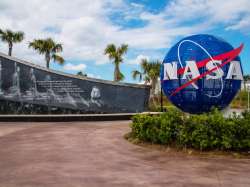NASA building robotic spacecraft to refuel, repair satellites in orbit
The National Aeronautics and Space Administration (NASA) is building a robotic spacecraft which will be outfitted with the latest tools and technologies to repair or refuel satellites currently in orbit. NASA has awarded a $127

The National Aeronautics and Space Administration (NASA) is building a robotic spacecraft which will be outfitted with the latest tools and technologies to repair or refuel satellites currently in orbit.
NASA has awarded a $127 million contract to California-based satellite company Space Systems/Loral for giving shape to its robotic spacecraft equipped with the tools, technologies and techniques needed to service satellites currently in orbit.
During its mission, the Restore-L servicer, a free-flying mission projected to launch in 2020, will rendezvous with, grasp, refuel and relocate a government-owned satellite to extend its life.
"The contract has a firm-fixed-price and includes a three-year core period and a two-year indefinite-delivery/indefinite-quantity portion. The total maximum value of the contract is $127 million," NASA said in a statement on Tuesday.
Space Systems/Loral will provide spacecraft bus, critical hardware and services for the development, deployment and operations of the Restore-L mission.
They also will provide related services to accomplish mission integration, test, launch and operations.
The Restore-L Project is managed within NASA's Satellite Servicing Projects Division at the agency's Goddard Space Flight Center in Greenbelt, Maryland, for NASA's Space Technology Mission Directorate.
NASA believes that successful completion of this mission will demonstrate that servicing technologies are ready for incorporation into other NASA missions, including exploration and science ventures.
NASA said it also plans to transfer Restore-L's technologies to commercial entities to help jumpstart a new domestic servicing industry.
Restore-L's capabilities can give satellite operators new ways to manage their fleets more efficiently, and derive more value from their initial investment.
These capabilities could even help mitigate the looming problem of orbital debris, the US space agency said.
(With inputs from IANS)